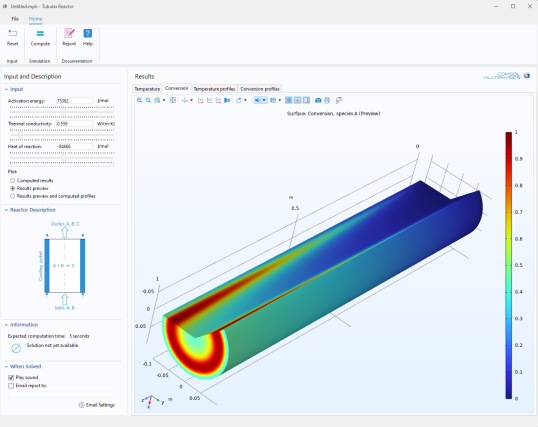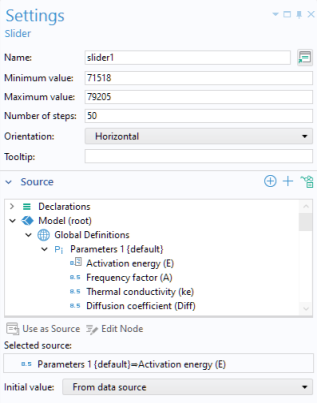A Slider is a form object for choosing numerical input using a slider control.
The figure below shows the user interface of the app where three slider objects are used to control the Activation energy,
Thermal conductivity, and
Heat of reaction, respectively, of the embedded tubular reactor model.

The Settings window of the first slider is shown in the figure below.

In this example, the slider uses a global parameter E, representing the
Activation energy, as its source. You can select any parameter, variable, or declared scalar variable as a source. Select from the application tree and click
Use as Source.
You determine the range of values for the data source by defining the Minimum value,
Maximum value, and
Number of steps for the slider. The
Orientation can be
Horizontal or
Vertical. You can also set a
Tooltip that is shown when hovering over the slider. The
Append unit to number option lets you associate a unit with the slider. This unit is appended to the number using the standard bracket notation, such as
[N], before being passed as a value to the source variable. As an alternative to
Append unit to number, you can choose
Append unit from unit set. See
Unit Set for more information.
In the Initial value list, select
From data source or
Custom value for the initial value for the slider.
In the Events section, in addition to specifying which method to call for an
On data change event, you can select the
Trigger while dragging checkbox. This setting determines if the event method should be called continuously while the slider is being dragged or only upon its release.

This checkbox can be cleared if the method that is called by the On data change event is computationally heavy, so that there is a lag when dragging the slider.


